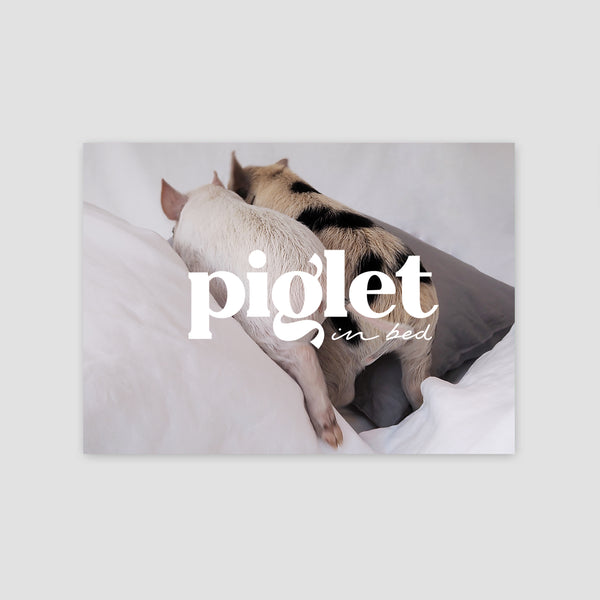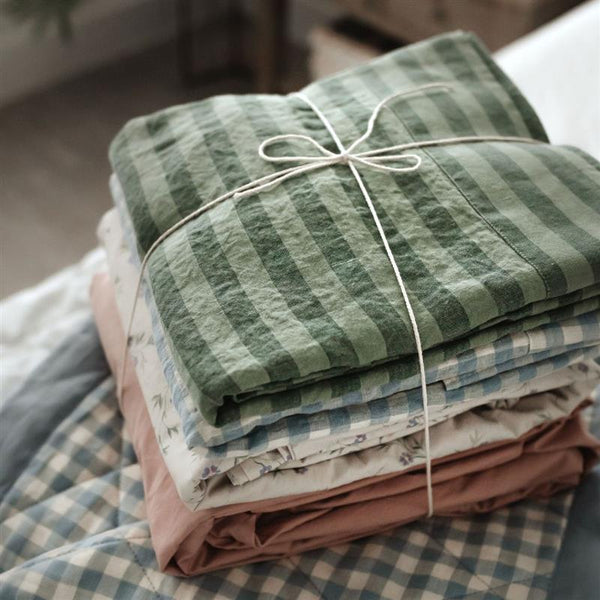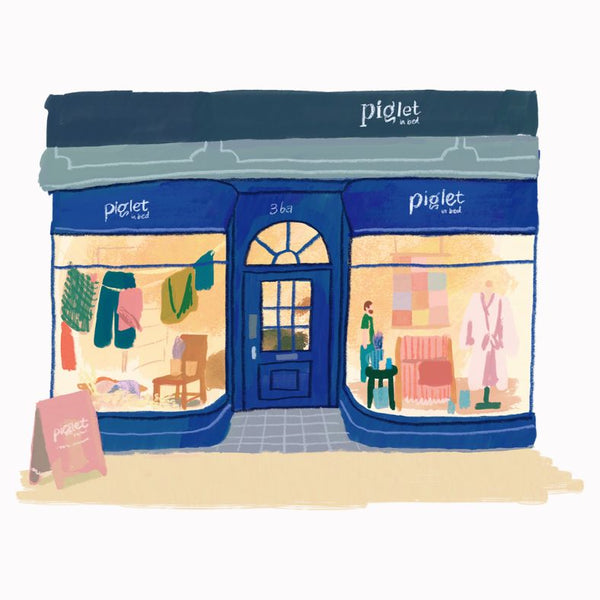If you are thinking about purchasing a jute rug or simply curious about this versatile material, then this page will tell you everything you need to know: its origins, its uses and why it is considered an “eco fabric”. At Piglet in Bed, we are passionate about natural materials and how we can incorporate them more into our home and lifestyle, with minimum fuss and faff. Like all of our product range, our jute rug collection is made for living: simple to style, beautiful anywhere in the home and naturally made. Read on to learn more about our rug collection and why we love it so much.
Piglet in Bed’s jute rug collection
All our rugs are made in India by a family run team. They are all hand-loomed, which makes them all unique in their own way. A loom is essentially a device used to weave thread: the warp (the thread that runs the length of the fabric) and the weft (the thread that runs across the width). The type of handloom used in the production of these rugs is called a pit loom, as the loom sits above a pit used to collect shedded fibres. Each loom is operated by a skilled artisan, who manually operates the loom using pedals. Every rug is flat-woven, to ensure durability and consistency across our selection.
All our rugs are made in premises that have been independently ethically audited. Our supplier was awarded a GoodWeave certificate by Good Weave International, a nonprofit organisation founded in 1994 by Nobel laureate Kailash Satyarthi, with the mission of stopping child labour in global supply chains.
What is jute?
Jute is a long, soft plant fibre (often referred to as the “golden fibre”) that can be spun into coarse, strong threads. They are immersed in water and stripped so that only the strongest fibres remain. To create jute yarn and rope, the fibres are spun like normal yarn but may be softened, dyed or blended, depending on the desired look. According to the Textile Exchange, jute makes up 50% of the production of plant-based fibres (excluding cotton). Approximately 85% of the world’s jute cultivation is concentrated in the Ganges Delta, which includes areas of Bangladesh and India (West Bengal).
Why is jute an “eco fibre”?
If you are looking for a hard-wearing, ecologically sound material for your home, jute may be just the solution. Not only is it eco-friendly to produce but it is also a highly sustainable end product.
- It grows with limited use of fertilisers or pesticides.
- It is completely biodegradable and recyclable.
- Jute has a very short growth cycle (4-6 months) making it a very efficient source of renewable material.
- It relies on natural rainfall so no requirement for extensive irrigation or water consumption.
- Jute absorbs carbon dioxide much faster than trees.
- It doesn’t release microfibres, which can pollute waterways.
- It is fully recyclable.
Why do we love jute rugs?
At Piglet in Bed we are all about effortless beauty, with minimum effort. Our jute rug collection was designed to complement most homes, with a neutral, natural style that will add depth, warmth and texture to any room. Jute is a breathable fabric and is highly durable so can take the brunt of a lot of footfall and wear-and-tear. It provides great heat and sound insulation and is generally considered low maintenance. For the ins-and-outs of how to care for your jute rug, refer to our care guide, which should answer all your questions.
For more homeware, bedding and sleepwear inspiration, check out Piglet in Bed, where everything is made for living!






























